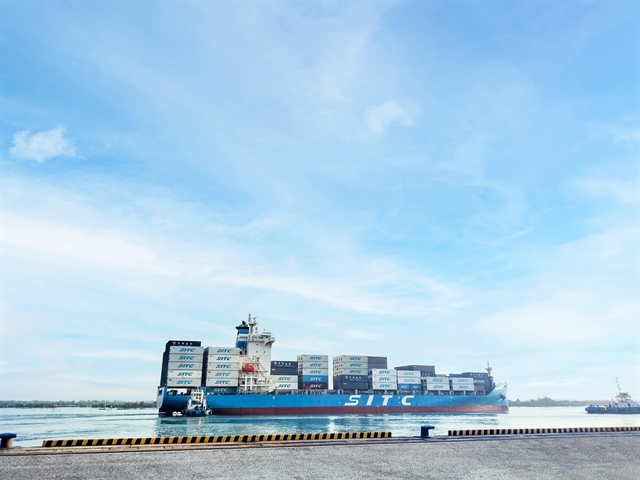 Economy
Economy

 |
| The recovery of exports helps boost logistics and industrial park stock prices. — Photo courtesy of THACO |
HCM CITY — The country’s export recovery has helped propel a 50 per cent increase in the stock prices of leading logistics companies that focus on international trade and industrial park developers, according to Michael Kokalari, chief economist at investment fund VinaCapital.
He said in a recent report that in early 2023 companies in the US and other developed countries had slashed orders to Asia to get rid of their bloated inventories, but by the end of the year Việt Nam’s export recovery had gained momentum as the destocking process wound down.
By early 2024 Việt Nam’s trade had been growing at 15 per cent.
Exports to the US, Việt Nam’s largest market, for instance, had rebounded from a 21 per cent drop in Q1 2023 to a 24 per cent jump in Q1 this year.
This had boosted Việt Nam’s air and sea cargo volumes by an estimated 40 per cent and 30 per cent year-on-year respectively in the first quarter, and the stock prices of leading local logistics companies such as Gemadept, Saigon Port and Saigon Cargo Service Corp, which focused on international trade, had jumped 50 per cent, far outpacing the 20 per cent increase in the broader VN-Index.
Capacity at the Cái Mép-Thị Vải deep water port complex, situated 60km from HCM City and with berths owned and operated by Gemadept, Saigon Port JSC and other logistics firms, was set to increase by more than 10 per cent next year.
Gemadept planned to double the number of berths it operated in Cái Mép-Thị Vải.
Capacity at the Lạch Huyện deep water port complex near Hải Phòng, owned and operated by several State-owned enterprises, was set to increase 1.5 fold by next year, including an 80 per cent capacity increase scheduled for end-2024.
The Government was also considering building a dedicated transshipment port at Cần Giờ near Cái Mép-Thị Vải.
This could compete with Singapore and China's Hong Kong for transshipment business since Việt Nam’s port handling fees were still roughly half those in Singapore even after the 10 per cent hikes that had taken effect earlier this year.
Construction of the new Long Thành Airport continued to progress, with a new cargo terminal set to break ground later this year.
Export recovery supports industrial parks
“The export recovery has also helped boost IP stock prices. That’s partly because a surge in high-tech exports is driving the export recovery and prompting more FDI inflows from the manufacturers of high-tech products – and those producers of high value-added products can pay higher lease IP lease rates.”
The share prices of industrial park operators were up around 50 per cent.
Higher exports were encouraging more FDI inflows – newly registered FDI was up more than 50 per cent in the first five months of 2024 to nearly US$8 billion – and most multinational manufacturers set up factories in industrial parks.
They were also pushing up IP lease rates as they tended to be less sensitive about rentals than producers of lower value-added products such as garments and furniture.
Việt Nam’s export recovery was being driven by high-tech products, which were typically shipped by air, and so air freight growth was outpacing sea freight.
Exports of laptops and other home electronics products had grown by more than 30 per cent in the first five months, double the country’s 15 per cent overall export growth.
Finally, there was limited supply of readily available IP land.
Occupancy rates at IPs in the north, which attracted the majority of new high-tech FDI investment, were over 80 per cent on average, while in the greater HCM City area, they topped 90 per cent.
The combination of price insensitivity among high-tech manufacturers and high occupancy rates pushed up rentals in the north and south by 35 per cent and 15 per cent last year and a further 7-10 per cent increase was expected this year. — VNS




